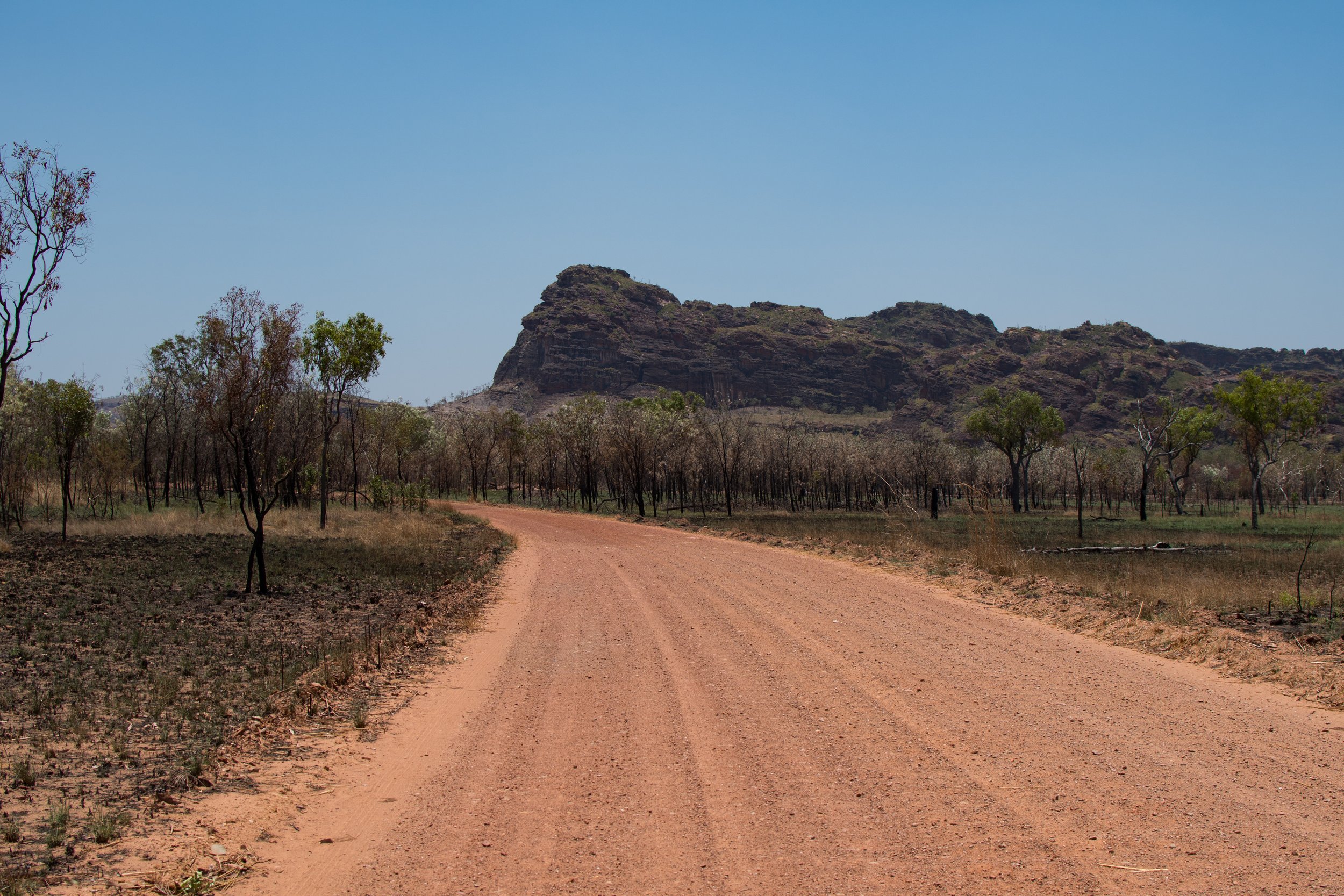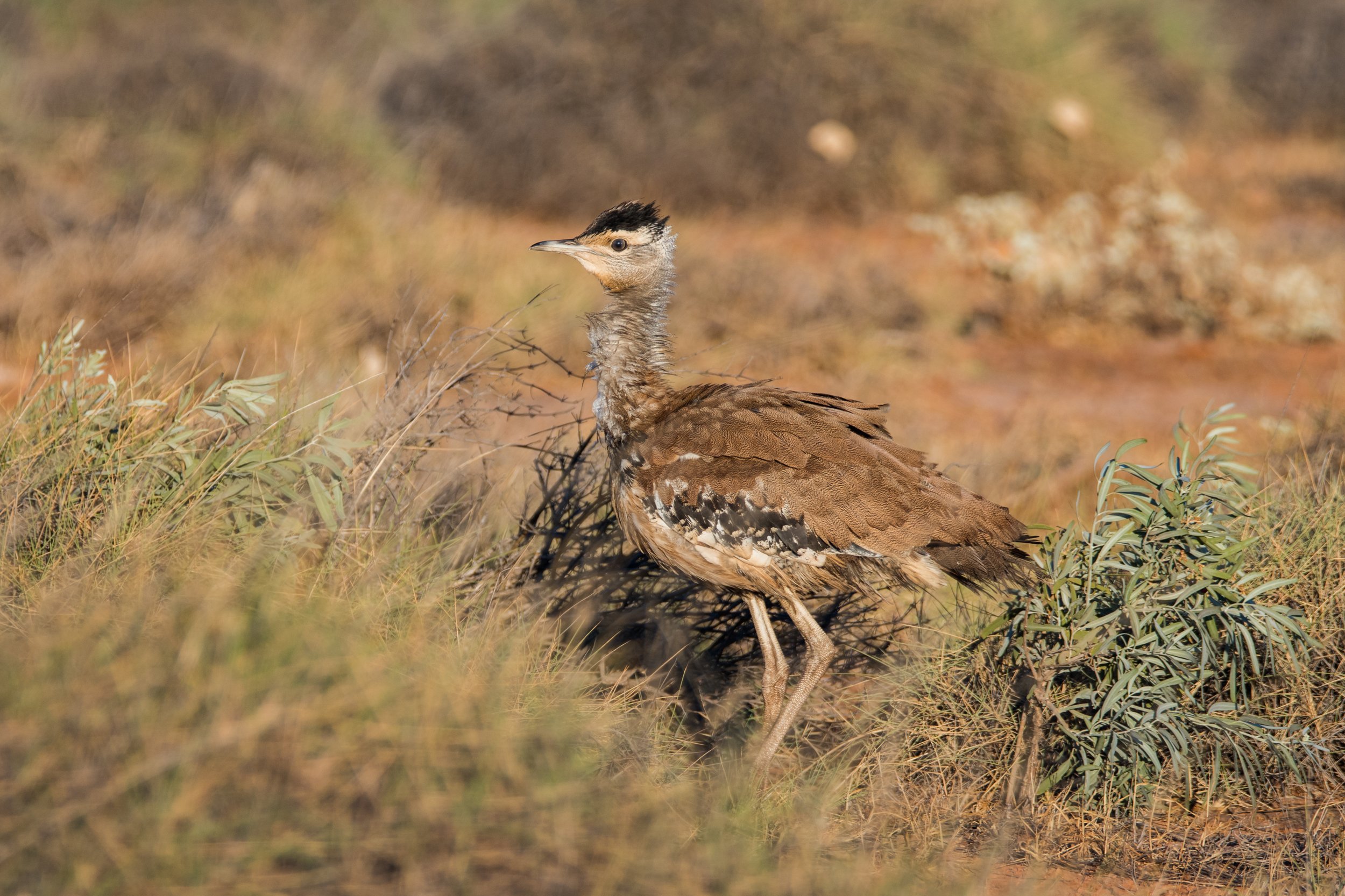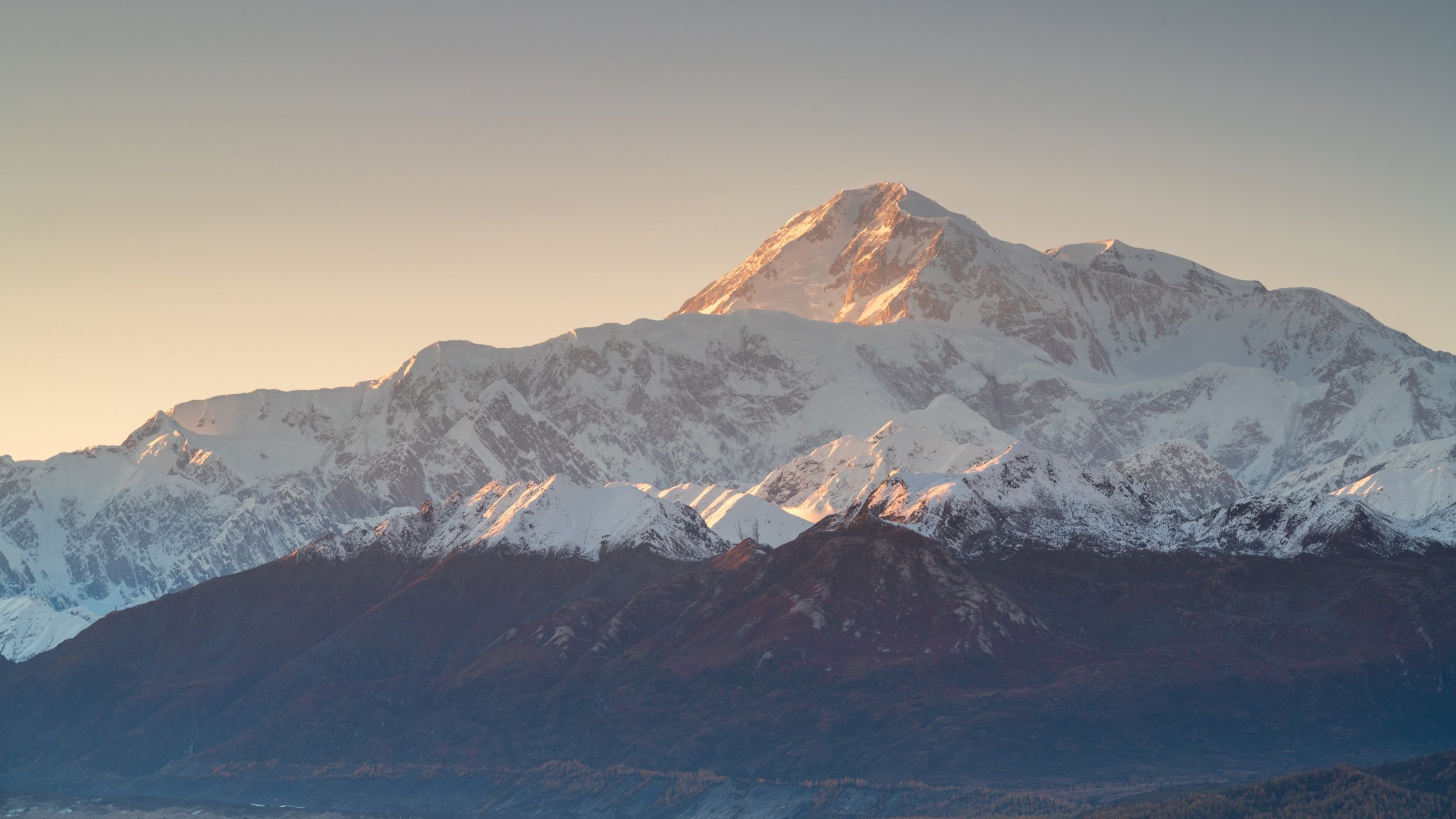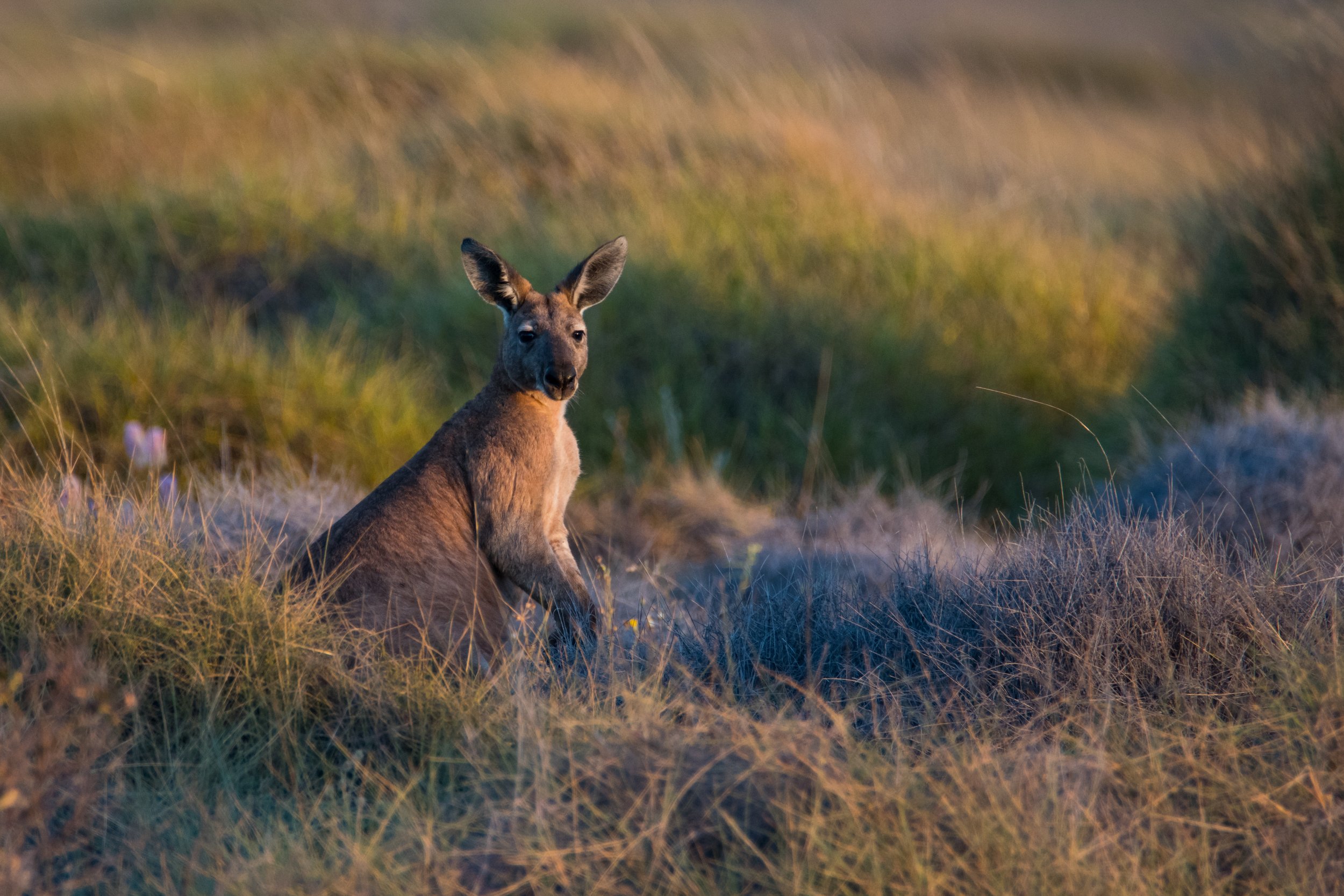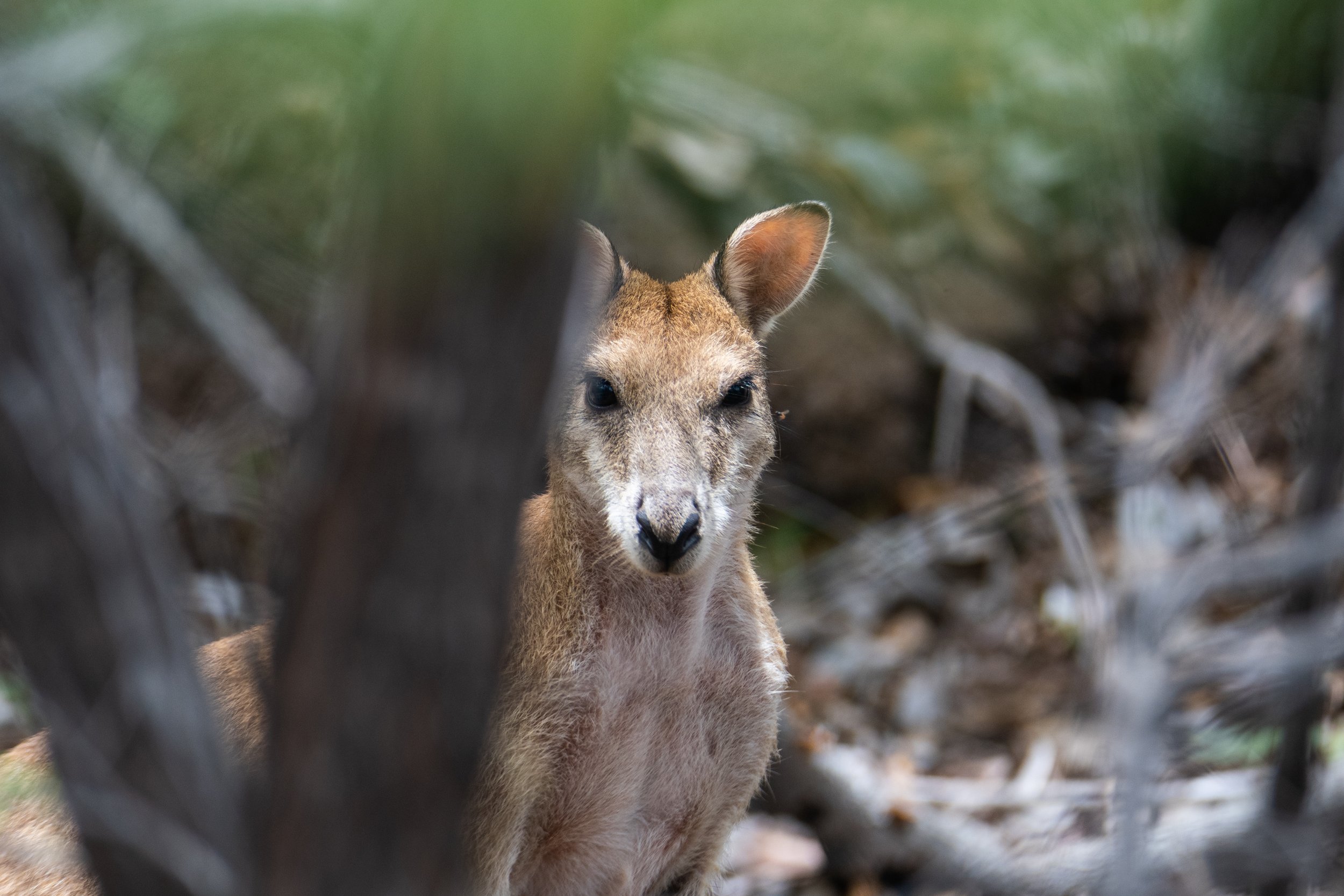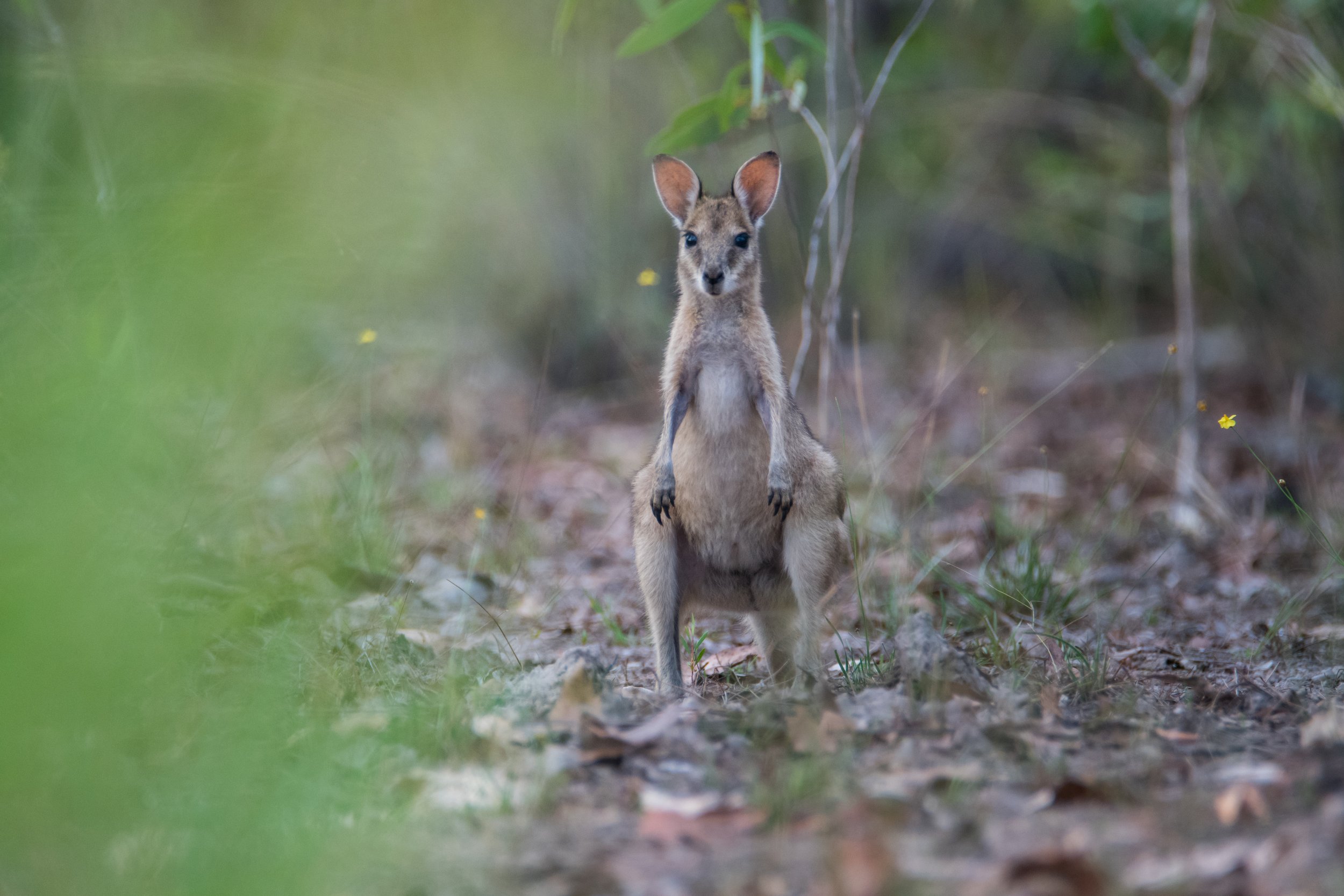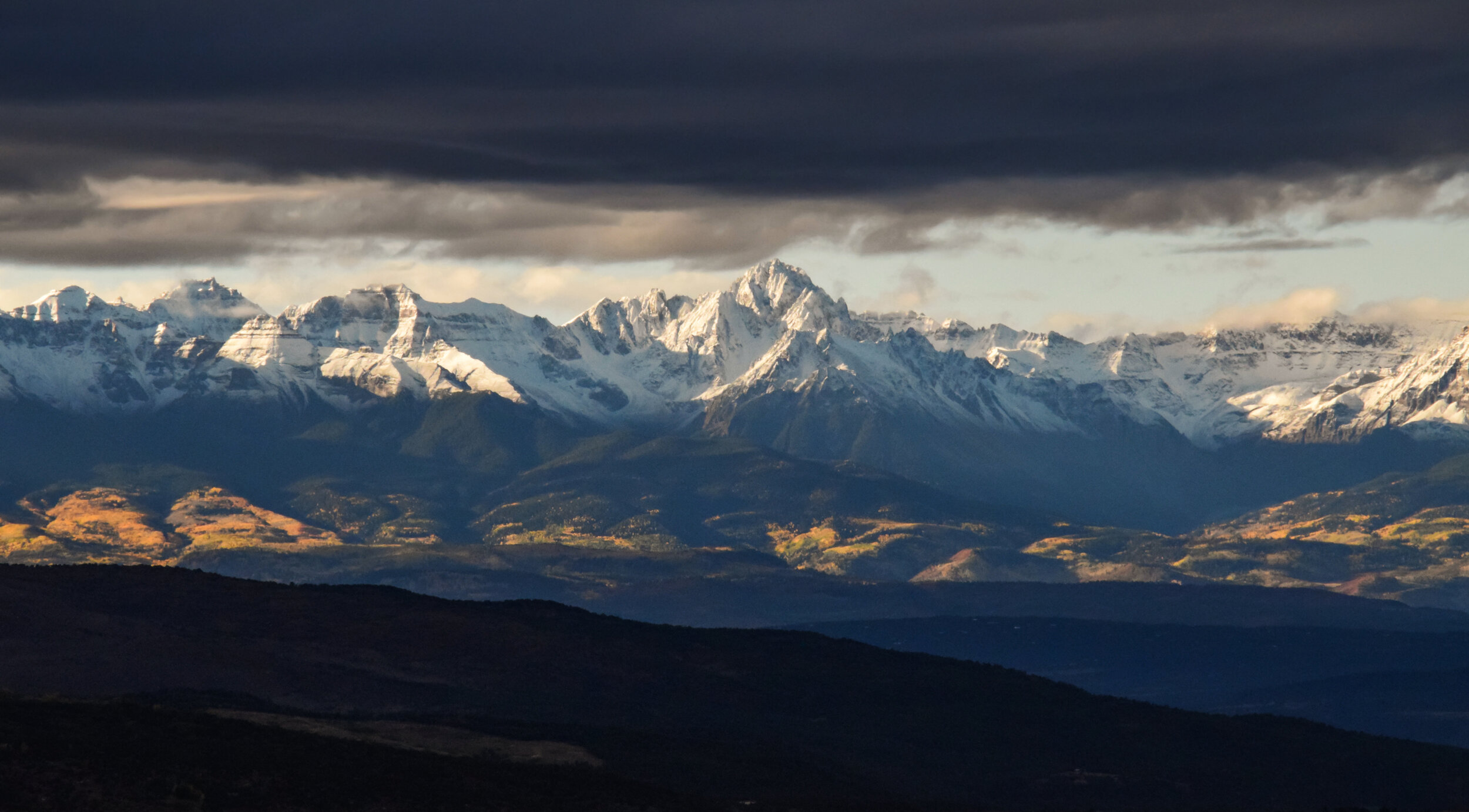From Alice To Albany
18 October 2018 — 21 November 2018
I was working for 6 months in Kings Canyon as a restaurant/bar supervisor. I was able to save up enough money to buy a 2002 Subaru Forester. Living in remote Outback Australia its easy to save money (as long as you don’t drink it all away at the pub) with the nearest town being four and a half hours away on the bitumen. Upon finishing working at Kings Canyon Resort in the Red Centre of Australia, I set off on a 34 day/4,000 mile road trip. Up to the Top End, then down through Western Australia to Albany.
It was a hot October morning and I was all packed up and left around 10am. I traveled south on Luritja Rd, then east on the Lasseter Highway then north on the Stuart towards Kakadu National Park. There is nothing like driving in Outback Australia in the Northern Territory. The red dirt and desaturated green shrubs stretch on for what appears to be an eternity, unobscured by anything man made. The road goes on forever, flat and straight.
My first night on the road I got to experience the harshness of the bush firsthand. I stayed north of Devils Marbles where I slept in a rest area in the back of my car. It was about 80’F at night and I could not crack the windows as I would get swarmed by bugs. My battery powered fan broke after a few minutes of use. Needless to say I did not have the most comfortable sleep. I was so overcome with excitement to be able to explore this vast land in front of me, I was not bothered by the lack of comforts of living on the road.
As I traveled north the dry baron landscape gave away to much more green scenery. I then entered Kakadu National Park.
Kakadu
Located in the north of the Northern Territory, 171km southeast of Darwin, lies a vast open land with an abundance of wildlife. At approximately 4.9 million acres, Kakadu National Park is one of the largest National Parks in Australia. This park was high on my list of places I wanted to see as I wanted to photograph the wildlife, especially the crocs.
I spent 5 days exploring the park camping at various locations. I traveled dirt roads, swan in swimming holes and hiked through the trackless bush. It was some of the most brutal camping conditions I had ever experienced. During the day it would reach 110’F and at night not much lower than 80”F. This temperature made both daily hiking and night sleeping very uncomfortable. A few times during the heat of midday, I would just sit in my car with the aircon on to cool off after a morning hike.
I saw a countless amount of wildlife and was able to get several exceptional images from this trip. I saw feral horses and cattle, wallabies, crocodiles and many different types of birds. I took a boat cruise down the Yellow Water billabong that was well worth the money spent. With my first major stop a large success I was more than happy to rest for a few days in Darwin to do my washing and take a much needed shower.
Click Here to read more | Kakadu: A Wildlife Photographers Paradise
Darwin
I stayed at the YHA hostel in the CBD of Darwin for 3 nights to recover from the heat. I enjoyed a nice comfortable bed and edited some images. I spent my days enjoying the inside aircon. I did a restock on groceries at Coles, then headed back west to continue my journey.
Litchfield National Park
About an hour and a half southwest of Darwin lies Litchfield National Park. Famous for its waterfalls and large termite mounds, I decided to spend 2 days there and camp a night. I (attempted) to photograph Wangi Falls, had a nice peaceful night camping, then got up early to photograph the termite mounds at sunrise.
Litchfield to Broome
I spent the next several days mostly driving west to the coast of Western Australia. This was one of the most remote drives I have done in my life. At times there were hundreds of miles between servo’s. I carried a Jerry can and did have to use it as one of the road houses I stopped at did not have any unleaded and would not receive a shipment for a few days. This was a vast, open, empty land. Void of human presence, It felt as though I was an explorer discovering new lands.
It did get very hot on the drive, with temperatures hitting 44’C (111’F). One time my car started to overheat due to the long hours of driving in such heat. I had to pull off the side of the road and let the car cool off. I checked the fluids and waited until the car was fully cooled down then I began again on my way. You must always be prepared for a drive west across WA with extra food, water, and the necessary tools. The is very remote and wild country.
I spent the next few days traveling this route. I stayed at a few campground, slept in my car, and explored some dirt roads and national parks. This was one of the most amazing adventures I have ever been on. The desolate empty scenery was stunning. The lack of human activity made you realize there are still parts in this world that are consumed by the wild, places that humanity has not yet tamed, and will not for a long time to come.
I made it to Broome and stayed in a hostel for a few nights to recover and restock. While traveling like this hostels are the cheapest way by far to stay indoors. They are also great places to meet interesting people from all around the world and hear some amazing stories of travel, and places you should go and places to avoid.
All rested and cleaned up, I repacked the car and set out for Karijini National Park.
Karijini National Park
I left Broome and headed South West following the coast to Port Headland. I headed south on 95 towards Tom Price and Karijini National Park where I would camp for a few days.
Located in the Pilbara region of Western Australia, Karijini is WA’s second largest National Park. It is known for its spectacular gorges, and ancient rocks. Several swimming holes are great to cool down in the heat of the day. While most of the park is inaccessible or accessible only by four-wheel drive, the parts that are accessible are very well maintained.
I spent a few days there camping at Dales Campground within the park. It was a nice campground and while I was there in November it wasn’t too busy. The heat was almost unbearable. I would hike to the bottom of the gorges during the day and dip in the pools to try and escape the scorching sun. I hiked around and explored the gorges a lot. I also did a bit of off trail hiking through the bush. Surprisingly I saw very little wildlife.
Karijini was a spectacular park to visit. It is full of natural wonders, it is remote, wild, and definitely worth a visit. After my few days there I headed west on 136 towards Exmouth and Cape Range National Park.
Cape Range National Park
There are a few places in Australia that stand out in all my travels. One of those places is Cape Range National Park. Located just a few miles from Exmouth, Cape Range consists of a rugged limestone range and an arid coastal plain that meets the spectacular Ningaloo Reef.
I spent a few nights camping at Neds Campground. It was a very relaxing spot, and it wasn’t too crowded. I was able to fall asleep to the peaceful sound of the ocean each night.
Cape Arid has an abundance of wildlife. It was one of the best parks I visited in Australia with opportunities for wildlife photography. I saw dingoes, emus, heaps of kangaroos and wallabies and even a large Mulga snake. I would spend the time before sunset driving up and down the paved road in the park photographing wildlife as I went. I would wake before the sun breaks the horizon and again take back to the drivers seat in search of wildlife.
I was able to see a very large Mulga snake basking in the sun on one of the dirt roads. I got out my long lens and was able to get relatively close and photograph him. He was non aggressive and didn’t mind me much at all.
The park was not too popular so it was no drama to pull of the side of the road to take images. I was not expecting to have that many wildlife encounters in this park so it was a pleasant surprise to be able to come away with so many images.
I also spent a bit of time snorkeling in the Ningaloo Reef. It was spectacular. I saw green sea turtles, beautiful reef and many fish. This is a prime location to swim with whale sharks but due to it not being the correct time of the year, I was unable to see any.
After I filled my memory cards with images of wildlife, I set off south down 1 towards Kalbarri.
Kalbarri and Hutt LAgoon
I headed south not knowing quite where I wanted to stop next. I ended up visiting Kalbarri National Park and stayed at Kalbarri. Kalbarri was a nice small coastal town. The national park had some epic views and dramatic coastline.
I then went to Hutt Lagoon (Pink Lake). It was very interesting to see a lake such a vibrant pink color.. The pink color is caused by the presence of carotenoid-producing algae, Dunaliella salina, and Vitamin A. After I continued to head south.
Nambung National Park
Located only 2 hours north of Perth is Nambung National Park. It is a park known for its pinnacle rock formations. It was an amazing sight to see. There is a sand track that you take around the park and you pass by alien looking formations coming out of the ground. I spent a day there exploring, and was able to see the sunset before finding a place to stay in my car a few miles away.
Fremantle
I went to Perth with the idea I would try and find work there. After getting turned around in the city and struggling to find an affordable place to stay, I decided to stay a few night in nearby Fremantle. I stayed there for 3 nights in a hostel. I changed my oil in the parking lot and checked over my car to make sure all was well. Once I was well rested, I decided to move on to find another place to stay and find work.
Great Southern Region
Located south of Perth and taking up the southwest corner of Western Australia is the Great Southern Region. This area encompasses rugged coastlines, large Karri forests and mountains. There are many amazing National Parks in this region and I spent several days exploring some of what it had to offer. I headed to the south coast driving through some spectacularly large Karri Forests.
--Conspicuous Cliff
I visited this location for sunset and hiked the beach. There was no one else there but myself and it was very peaceful and relaxing. I stayed in my car in a nearby campground.
— D'Entrecasteaux National Park
Another spectacular coastal national park, with dramatic cliffs lining the coast. I explored the coast line as well, looking for images. The wind here was very strong and the weather was a bit cold. Definitely not weather for laying out on the beach.
After spending several days exploring this amazing area, I decided to stop for a few nights at the 1849 Backpackers hostel in Albany, Western Australia. The goal was to just rest up and keep on moving. I ended up really enjoying my stay in Albany at the hostel so I decided to find work there and stay for a few months to replenish my bank account.
Watch On YouTube: Australia Landscape Photography | Epic View at Torndirrup National Park
This trip was an absolutely amazing experience that will never be forgotten. Traveling the vast open land of the Northern Territory and Western Australia by car is something not many people get to experience, so I was very fortunate. I saw breathtaking landscapes and unforgettable wildlife on my journey. And this was just the beginning of my adventures in Australia.













